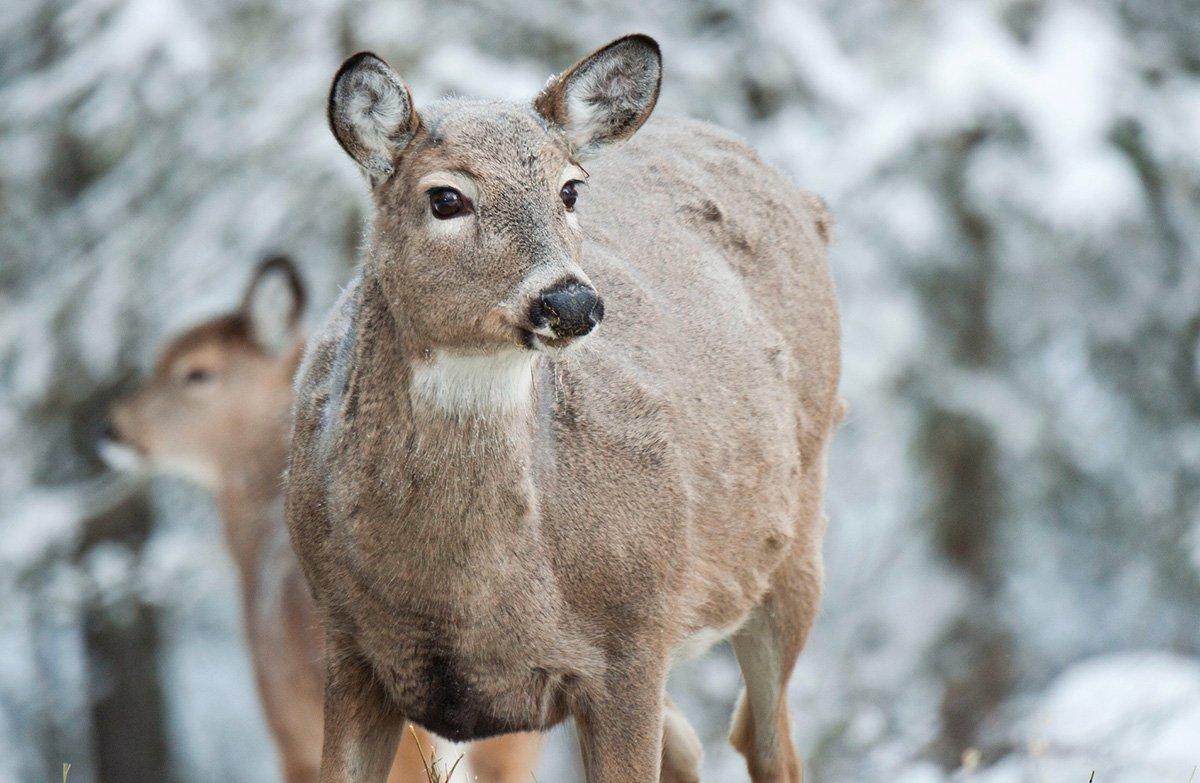Are antlerless tags best filled early or late in the season? There are reasons for both
Deer seasons are ending or over in most of the country, and a lot of hunters counting down the final hours in the stand like to fill their tags with last-minute does. But is the late season the best time to shoot antlerless deer, or should you be doing that earlier in the fall?
There are good arguments for both.
Shooting Does Early
Filling tags early feels good, hones skills and restocks freezers.
I prefer to shoot my does before they breed, said Realtree pro staffer Art Helin. The deer are not as stressed in the early season and have not been run to the brink of exhaustion. Second, if I shoot them before the rut, I'm shooting one deer and not two or three.
There are several other reasons to shoot does early, too. First, you have more time. Second, deer have been pressured less and are usually easier to hunt. Certain does are as tough to kill as some mature bucks, and they become exponentially warier as the season progresses.
Another reason to get it done quickly is reduced stress. Harvesting does early helps balance the buck-to-doe ratio prior to the rut, which puts less strain on antlered deer. While the bucks might argue there's no such thing as too many does, and some biologists argue they head into winter with higher average body weights when the ratio is closer to 1:1. They should enter winter in a healthier condition when the adult sex ratio is balanced, said QDMA's Kip Adams. I'm not aware of any published data actually showing that, but the logic is correct though.
Some say it's easier to avoid shooting button bucks when they're younger. Sure, they're much smaller than 1 ½-plus-year-old does, but at this stage, they're harder to differentiate from doe fawns. That said, a bigger body, flat line between the ears, and maybe even a couple buttons should help correctly identify juvenile males. And speaking of button bucks, shooting does that have multiple buck fawns can actually increase localized buck densities.
Over the past five years, we've collared 23 button bucks, Helin said. Only three of those remained within a mile of where they were born, and that was due to the mother being shot. If the mother is still living in the spring, she kicks the buck out. As for button bucks that keep their mothers, the closest one that's still living is 4.7 miles away. The farthest is 13.4.
Still, shooting does early potentially increases fawn mortality rates, since they're still reliant on their mothers to avoid predation, even come September and October. Shooting does sooner educates the local deer herd earlier in the season. And you have no way of knowing how many does will be taken by predators, natural causes and other hunters throughout the season, so there's potential for overharvest. Plus, the weather is warm in the early season, which means there's often a rush to keep meat from spoiling. If you shoot does early, recover, process, and get the meat on ice as soon as possible.
Shooting Does Late
I prefer filling my doe tags during the late season for several reasons, said Realtree pro staffer Matt Bullins. First, early season and November are the best times in my area to fill a buck tag. Second, after the rut (and later in the year), it's easier to get the does on a feeding pattern coming to specific areas.
Colder weather doesn't hurt a thing for keeping venison in good shape, either. Allowing a deer to hang and age for a few days in cool, dry weather can dramatically improve the quality of the meat.
Waiting until the end of season gives you an opportunity to better assess the deer herd, too. You might not need to shoot as many does as you think — and maybe none at all. Next, killing does late won't orphan fawns as early, and therefore, they'll have more time to learn from and be protected by their mother — even if the buck fawns do disperse to somewhere miles away.
But as previously mentioned, late-season deer are more pressured now, and getting a shot at one won't be easy. If you wait all fall to fill your tags, you might not have any venison in the freezer. Plus, as winter wreaks havoc on deer, their body weights are lower. And, the energy spent by bucks to breed does is wasted if you kill the does before they give birth to their fawns. There's potential of shooting a buck that's already cast its antlers, too.
Personally, I'll fill doe tags during the early and late seasons both. I just shoot them when, situationally, it makes sense. Sometimes, it's best to just go deer hunting, have fun, and eat deer meat.
Don't Miss: 5 Reasons Why Selective Doe Harvest Is Important
Check out more stories, videos and educational how-to's on deer hunting.







